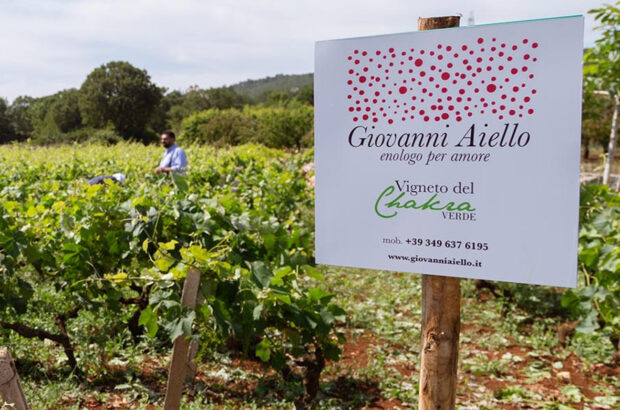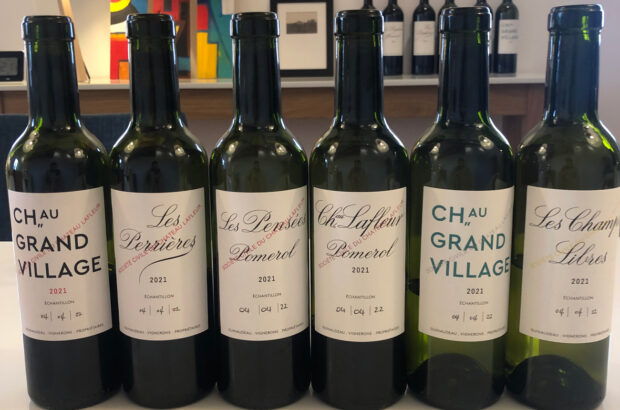California’s wine industry has avoided a financial crisis after the federal government announced a multibillion-dollar rescue package for depositors at the collapsed Silicon Valley Bank (SVB).
Thousands of wineries were locked out of their accounts after the industry’s go-to bank was placed into receivership on Friday. They spent an anxious weekend fearing that they would be unable to pay their staff or process transactions. John Balletto, president of family-owned Balletto Vineyards in Santa Rosa, said the industry was in shock and warned that the fallout could be ‘devastating’.
However, regulators announced on Sunday evening that they will safeguard all deposits at the bank, including funds that would not normally be covered by federal deposit insurance. It means that SVB customers can access all of their deposits on Monday morning, providing a lifeline for the imperilled sector.
The joint statement from the Treasury, Federal Reserve and Federal Deposit Insurance Corporation (FDIC) has averted an immediate crisis for winemakers. However, the collapse of SVB will have long-term consequences for the Golden State’s wine trade, as it played a crucial role in the $73 billion sector’s infrastructure.
A brief timeline of SVB’s demise
On Thursday last week, San Francisco-based venture capital firm Founders Fund sparked a bank run on SVB by flagging concerns about its financial stability. The bank scrambled to raise capital to offset fleeing deposits, but it lost $1.8 billion when selling long-term government bonds whose values had been torpedoed by the Federal Reserve’s interest rate hikes.
On Friday, regulators at the FDIC closed the bank after its attempts to raise the requisite capital ultimately ended in failure. It marks the largest collapse of a US financial institution since the height of the financial crisis almost 15 years ago. The decision to place the bank into receivership put almost $175 billion worth of customer deposits under the regulator’s control.
SVB was FDIC-insured, so all customers with up to $250,000 sitting in the bank knew that they would be made whole. However, there were no guarantees that customers with larger deposits would recoup all of their money. According to S&P Global Market Intelligence, 97% of accounts with SVB had more than $250,000 deposited, and SVB held $151.6 billion in uninsured deposits, leading customers to plead for government help over the weekend.
No bailout, but a major rescue package
Wineries’ fears were compounded on Sunday when secretary of the treasury Janet Yellen ruled out a bailout of the collapsed bank. However, regulators then announced a rare move to safeguard all deposits at SVB, including the $151.6 billion in uninsured deposits.
This decision was designed to prevent the bank’s abrupt collapse from infecting the rest of the US financial system and sparking a domino effect. Regulators determined that there would be a ‘systemic risk’ to the financial system if they did not act.
Taxpayers will not foot the bill, as it will be covered by the banks that fund the deposit insurance system. However, SVB’s shareholders and ‘certain unsecured debt holders’ will receive no protection.
Nasdaq futures surged 1.75% on the back of the rescue package, while major cryptocurrencies including Bitcoin rallied by more than 10%. USDC, a stablecoin designed to be pegged to the dollar, had fallen as low as $0.88 after executives announced that $3.3 billion of its $40 billion in reserves were held at SVB. Meanwhile, HSBC announced it would purchase SVB’s UK arm for £1, providing salvation for British businesses caught up in its collapse.
The leading bank for the wine industry
SVB was America’s 16th-largest bank, with $209 billion in assets at the end of 2022. It primarily focused on the tech and healthcare sectors, but California’s wine industry was hit hard by its demise, as SVB was the leading bank for the trade.
In 1994, SVB executive vice president Rob McMillan founded its wine division, which has since loaned more than $4 billion to producers.
McMillan was always sympathetic to the nuanced financial needs of the wine industry. New producers require a significant upfront investment before the first bottles are sold, and SVB carved out a niche by catering to those requirements.
‘Over the years, Silicon Valley Bank and the many people that worked with us there became more than a bank,’ said Clarice Wine Company founder Adam Lee. ‘They became partners in our growth as a winery and as winemakers.
‘I have heard from several SVB employees – my friends there – and they have apologised to me about what happened and the difficulty it might have caused me. They are in shock, just like I am.’
The bank is also renowned for its annual ‘state of the industry’ report, which helps guide sales, marketing, farming and investment decisions for the sector. If it cannot be resurrected, its loss will be widely felt.
Elsewhere, the bank connected wineries with tech clients via a concierge service, and it hosted auctions, dinners and educational events too, so its demise represents a major blow to the industry.
Wineries fear for the status of their loans
Wine companies represented 2% of SVB’s total loan business, according to an internal financial report. It had a far larger exposure to tech and healthcare, but SVB still had more than $1 billion in loans outstanding to the wine trade at the end of 2022. Those loans may now need to be rearranged at less favourable terms with a new organisation as the FDIC seeks buyers for the various divisions of the collapsed bank.
McMillan, one of the most influential figures in the Golden State’s wine industry over the past three decades, agreed to stay with the FDIC-controlled bank for 45 days. ‘I’ve taken countless calls from clients who want more information, want to better know what happened, or just want to talk to me,’ said McMillan. ‘Most it seems want to know how I’m doing too, and I sincerely appreciate the good wishes and prayers.
‘Some though have been irritated or angry, and I completely understand. That’s OK. This isn’t fair. The frustration is justified. In the space of 48 hours, SVB went from being a very viable banking organisation with sound metrics by all regulatory measures, to being out of business. Investors lost billions, clients had their deposit accounts frozen, and the FDIC halted all banking transactions to stop the panic-driven loss of cash.
‘How could that have happened? I never thought I’d see an old-fashioned run on the bank, let alone find me in the middle of a collapse, but that’s the reality.
‘The wine industry had nothing to do with this. This event was an unnecessary fear-based collapse that the venture capital industry participated in and is having second thoughts about.’
Tech venture capitalists – many of whom typically rail against the government, claiming it is too slow and too big while promoting a more libertarian agenda – spent the weekend pleading for help after fearing they would lose billions of dollars.
It is with great irony that the federal government has now rescued them, but critics argue that these tech investors have been given preferential treatment, benefiting from capitalism when things go well and socialism when they fall apart.
Some Republicans have accused the Biden Administration of ‘corporate cronyism’ after it announced the rescue package.
US regulators will spend the next few days trying to sell off SVB’s commercial banking operations, a wealth unit, an investment bank and a fund manager.
Wineries will now be able to make payroll, process card transactions, pay their bills and resume any renovations, expansions and acquisitions that were underway. However, it remains to be seen how the sector will cope with the loss of its specialist lender in the long-term.






